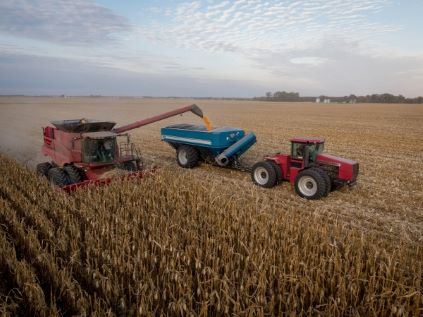It’s a trend in American agriculture: the big are getting bigger. Recent U.S. Department of Agriculture (USDA) data show farms with at least $1 million in annual revenue account for 4% of the nation’s farms, but 66% of the commodities produced in the nation.
Though many remain family farms, their owners and operators are increasingly adapting farm management strategies to integrate things like human relations and employee management. Many of today’s farms are starting to look less like traditional family farms and more like corporations.
“What we used to think of as a farm is evolving and will continue to evolve moving forward,” according to Nationwide Agribusiness Farm Underwriting Director Justin Owens. “As they grow, one trend we're seeing is they're taking on the look of commercial ag operations today.”
Changing farm management priorities
As farms and acres grow, so do workforces. That causes changes in farm management priorities, added Nationwide Agribusiness Senior Underwriting Director Doug Becker.
“Large farmers are investing in bigger facilities and truck fleets. You may need to start adding HR resources so you can manage new tasks like vetting truck drivers so you know your fleet is well-maintained and safe,” Becker said. “That’s not an easy transition for farmers who are wired to put ROI first. It’s hard to put a price on adding people and resources to make sure you’re not becoming more exposed to risk.”
Consider these factors for larger farms
Mitigating that risk on large farms happens in different ways. Managing a large farm today accounts for risk mitigation in several ways. Consider devoting resources to these priorities as your farm grows:
- Workforce training and education. Just like training drivers to meet certain safety standards when growing your truck fleet, for example, add educational programs to ensure every worker knows the hazards of each job on the farm and is prepared to mitigate those hazards.
- Health care and compensation. Provide good benefits and competitive pay to not only retain workers but make your farm an attractive workplace for qualified candidates as you grow.
- Specific liability coverage. As you grow, your farm faces new hazards. Account for managing larger grain storage facilities and machinery fleets, for example, in your risk management plan to ensure you’re covered and not exposed to increased liability.
ROI isn’t always immediate
While ROI is a major factor in many changes as your farm grows, it’s often difficult to measure for things like workforce training and education. That doesn’t mean they’re without value. “Since these aren’t really tangible, they’re not necessarily going to show a direct ROI,” Becker said. “It’s important to see the value of these things when you’re growing your operation.”
For these types of specific farm management components, Owens recommends thinking in the context of both ROI and general competitiveness.
“There has to be a return on the investment,” he said. “Investing in these types of things will help make you more competitive, which will provide ROI in the long run.”
As your farm grows and changes, so will your needs to prevent any risks that might occur. To learn more about how to stay on top of potential risks your farm may come across, be sure to check out Nationwide’s farm & agribusiness insurance resources.
